The process of setting up SSRS in SharePoint/Project Server 2016 integrated mode has changed a little bit when compared to earlier versions of SharePoint/Project Server. The process consists of installing SSRS on the SharePoint servers, creating SSRS service application and configuring the Reporting libraries to contain report elements.
Installing SSRS 2016 on SharePoint/Project Server 2016 Farm
SSRS must be installed on a SharePoint/Project Server 2016 server that is configured in a Custom Role. MinRoles are new to SharePoint/Project Server 2016, and SSRS doesn’t support any roles other than the Custom Role. If your server is not running under this Custom Role, then installation will succeed, but SSRS service will be shut down by the roles engine during the next maintenance window or when you run the SharePoint configuration wizard next time. To check which role your server is using, go to “Central Admin -> System Settings -> Servers -> Convert server role in this farm”
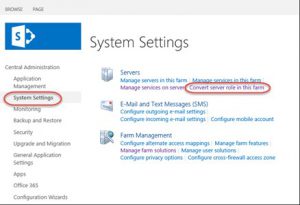
Selecting this option open the server role configuration page. If the role is already set to Custom, you are good to go. Otherwise, you can change using the “New Role” dropdown.

Once the correct role is in place, SSRS can now be installed on the server. The first step is to mount the SQL Server media and run the installer. SSRS Integrated mode is part of the Shared Features collection, and it consists of two parts. The first part, “Reporting Services – SharePoint” is the actual SSRS Service application. And should be installed on any SharePoint server allocated to doing the heavy lifting of rendering the reports, i.e. the server configured as “Custom Role”. The second part “Reporting Services Add-in for SharePoint Products” is used to connect a SharePoint server to an instance of the SSRS Service application, and should be installed on all SharePoint servers in the farm.
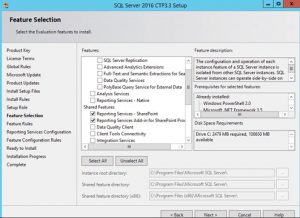
Creating the SSRS Shared Service Application
Go to “Central Admin -> Application Management -> Service Applications -> Manage Service Applications”. Select “New” from the ribbon and then select “SQL Server Reporting Services Service Application”, then you will be presented with a dialog box where you can specify a name for the service and other configuration parameters.
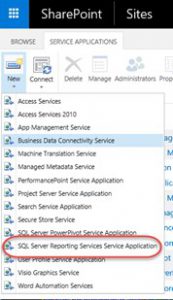
I typically create a new application pool for each of the new SharePoint service applications, and I always change the name of the database. SSRS will create three databases, one with the name specified and two others that use this name as a base. Scrolling down, you will see options for activating the SSRS features in the all of the farm’s web applications. These features can be enabled from the site collection as well – go to site collection features and then activate “Report Server Integration feature”.
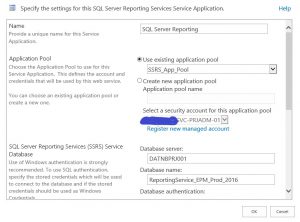
Creating a Reporting Library
Add a new document library by going into “Site Contents”, then select “Add an App” and then wait for it be created. Then, go to library settings, click on Advanced Settings and enable the use of content types. Next, add the SSRS content types to the library by clicking “Add from existing content types”, select the “SQL Server Reporting Services Content Types” category and then add the “Report Builder Report” & “Report Data Source” content types.
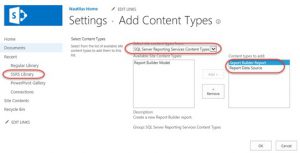
Once added, click OK and you should be able to create a new report or data source by selecting new in the library’s ribbon and choosing the appropriate item. The document library can now be used to store reports.
For more details & kick start your project management journey, sign up for our Microsoft Training Classes or send us an email.
I hope you find this blog post helpful. For more tips and tricks on Project Management, please visit www.epmainc.com

